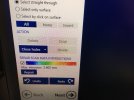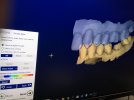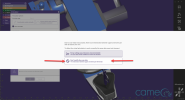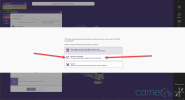M
miltonic
Member
Full Member
- Messages
- 11
- Reaction score
- 0
Hi all, I'm at my wits end and have exhausted all of my mental ability and effort troubleshooting bite scan inaccuracy through intra oral scan cases we get from our clients. I would be more than happy to send a high end bottle of scotch or your preferred drink of choice if you can solve this once and for all for me. Yes, I'm that desperate for help.
I use exocad, and I have been unable to design a crown with any reliability regarding the occlusal accuracy if it is from an intraorally scanned case. Two different clients I work with use the 3M TruDef scanner. When I finish margin marking and load the exo. case file into exocad after margin marking, nearly every time the Trudef bitescan aligns the jaw scans in a way where they intersect each other significantly. I would say on average the occlusal plane of the jaw scans are intersecting about .4mm, and in some cases almost as much as 1mm or even more. Exocad recommends cutting away the scan inaccuracy, which if I proceed to do, will just gouge out the antagonist scan, which I highly doubt is accurate. Otherwise my only other choice is to leave the jaw scan unaltered, and do my best to reposition the antagonist so it has even contact everywhere. Obviously this is taking a guess at the patients centric bite, but it seems much more likely to be accurate than cutting out the opposing. I'd say the most common occlusion problem is the crown is too tall and the dr has to spend significant time grinding it down, in some cases much of the anatomy is lost. Of course, this is not how it is designed, and when I mill and test it on the 3d printed model, it is perfectly represented as it is in the CAD. When the Dr. puts it in the mouth, margins and proximal fit are usually perfect, but occlusion is almost always high.
I've been fighting this for two years, have tried many different solutions with no consistent accuracy, to the point where one of the dentists has stopped sending me digital cases and is sending them to a digital specialty lab, and I guess the lab has been getting great results. So obviously they have a reliable workflow, and I have not figured it out. I have self taught myself full arch hybrid cases with perfect seating results, but I can't figure this out...dental cad is bitch slapping me right now. Can anyone give me advice on how they use exocad to ensure close to accurate bite relationships so your crown occlusion is close to perfect at seating? Do you let Exocad cut away scan accuracies as recommended by Exocad? Are there any other details to consider? I do not have this problem when I scan cases in on my desktop scanner and design the crown, and my margins and proximal contacts are usually perfect. Just occlusion....just the goddamn intra-orally scanned occlusion. I really appreciate you all here, great forum and lab techs. Thank you so much for reading. And I'm very serious about the Scotch offer.
-Matt
I use exocad, and I have been unable to design a crown with any reliability regarding the occlusal accuracy if it is from an intraorally scanned case. Two different clients I work with use the 3M TruDef scanner. When I finish margin marking and load the exo. case file into exocad after margin marking, nearly every time the Trudef bitescan aligns the jaw scans in a way where they intersect each other significantly. I would say on average the occlusal plane of the jaw scans are intersecting about .4mm, and in some cases almost as much as 1mm or even more. Exocad recommends cutting away the scan inaccuracy, which if I proceed to do, will just gouge out the antagonist scan, which I highly doubt is accurate. Otherwise my only other choice is to leave the jaw scan unaltered, and do my best to reposition the antagonist so it has even contact everywhere. Obviously this is taking a guess at the patients centric bite, but it seems much more likely to be accurate than cutting out the opposing. I'd say the most common occlusion problem is the crown is too tall and the dr has to spend significant time grinding it down, in some cases much of the anatomy is lost. Of course, this is not how it is designed, and when I mill and test it on the 3d printed model, it is perfectly represented as it is in the CAD. When the Dr. puts it in the mouth, margins and proximal fit are usually perfect, but occlusion is almost always high.
I've been fighting this for two years, have tried many different solutions with no consistent accuracy, to the point where one of the dentists has stopped sending me digital cases and is sending them to a digital specialty lab, and I guess the lab has been getting great results. So obviously they have a reliable workflow, and I have not figured it out. I have self taught myself full arch hybrid cases with perfect seating results, but I can't figure this out...dental cad is bitch slapping me right now. Can anyone give me advice on how they use exocad to ensure close to accurate bite relationships so your crown occlusion is close to perfect at seating? Do you let Exocad cut away scan accuracies as recommended by Exocad? Are there any other details to consider? I do not have this problem when I scan cases in on my desktop scanner and design the crown, and my margins and proximal contacts are usually perfect. Just occlusion....just the goddamn intra-orally scanned occlusion. I really appreciate you all here, great forum and lab techs. Thank you so much for reading. And I'm very serious about the Scotch offer.
-Matt







 !
! 